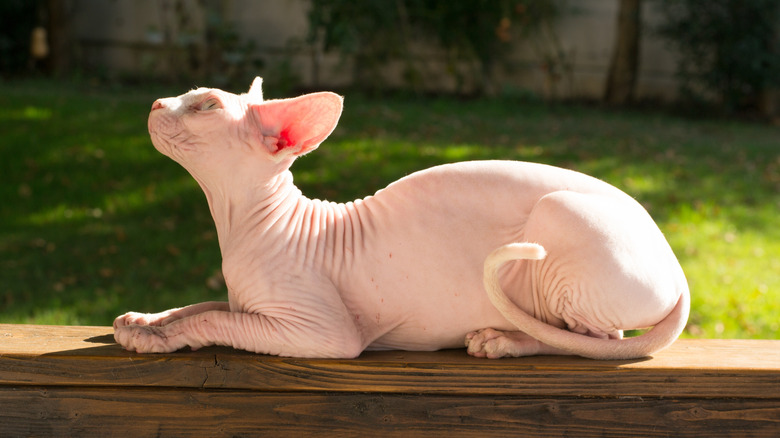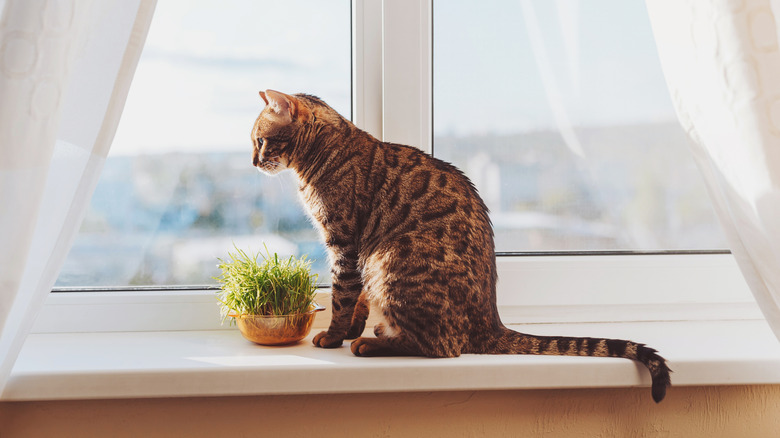Can Your Cat Actually Get Sunburned? What To Know
When thinking of sunburns, the image of bare skin sitting in the sun for too long often comes to mind. However, sunburns can occur even for our fully-furred friends, such as cats. All cats are prone to sunburns, including hairless, short-haired, and long-haired varieties. It's a good idea to know what the signs of a sunburn look like in felines, even if yours stays primarily indoors. Luckily, a few preventive measures can help keep your cat happy and healthy when they spend time soaking up those rays.
Though all felines can experience sunburns, they may occur in different locations for each. For hairless cat breeds, such as sphynx cats, the entire body may get sunburned due to a lack of fur protecting the skin. In shorter and even the fluffiest cat breeds, the ears and nose often have the least amount of fur coverage. This exposes the skin in these spots to more sun and potential burns.
Symptoms and prevention of sunburn in cats
Just like with people, cat sunburns are caused by too much exposure to UV radiation. According to PetMD, the most common signs of a sunburn include red, scaly, or crusted patches of skin. This can cause your cat to groom more often, express pain, or show general discomfort. If your cat's eyes, ears, or nose are affected, you may see redness, swelling, or damage to the skin. In cases of severe sunburn, the area may also begin to blister or ooze yellowish fluid — a sign that a blister has popped.
If your cat will be outside, it's a good idea to take some preventive measures to keep them from getting sunburned. Cat-safe sunscreens can be applied to the ears, nose, and other sensitive parts of your feline's skin. In addition, hairless cats may benefit from cat clothing, such as hats or sweaters, to protect sensitive skin. Providing a shaded area can also give your cat a spot to lounge safely out of the sun.
Indoor cats can become burned if they spend too long in front of a window basking in a sun bath. It's a good idea to place some cat-safe sunscreen on your cat's nose, paws, or ears if they enjoy sunbathing. Adding a UV film to windows can also reduce the number of UV rays that enter the home, further protecting your cat.
Treatment options and when to see your vet
If you notice a sunburn on your cat, there are a few things you can do at home. PetMD recommends applying aloe vera gel to help soothe them. If you notice blistering or oozing of fluid, keep the wound clean and dry. In addition, using an Elizabethan (cone) collar to stop your cat from licking can help reduce the chances of a secondary infection. Lastly, you can try a cool compress.
Severe burns, blistering, or burned spots that look infected should always be seen by your veterinarian. In these cases, additional treatment may be needed, such as wound care, antibiotics, or medicated creams. Sometimes prolonged sunburns and damage to the skin can lead to more serious conditions like solar dermatitis. This type of skin inflammation is commonly caused by sunburns, resulting in painful irritation. If left untreated, it can lead to skin cancers such as carcinoma — a key reason why the care and prevention of sunburns is so important.


